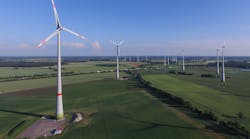On Monday morning in Kawasaki, Japan, a steel pipe plant caught fire while a warehouse was being demolished. Fourteen fire trucks rushed to the scene to extinguish the blaze before anyone was injured. This serves as a reminder that an industrial fire can happen at any time, but unlike the horrific explosion a few weeks ago in Tianjin, China, the greatest loss doesn’t have to be human life.
The Tianjin disaster on Aug. 12 that claimed at least 129 lives (44 are still missing) also occurred at a warehouse — one that stored hazardous chemical including sodium cyanide, potassium nitrate, ammonium nitrate, sodium nitrate, and calcium carbide.
When treated with acid, sodium cyanide becomes hydrogen cyanide (a favorite poison of homicidal dictators). And Ammonium nitrate was used by terrorists to devastate the Alfred P. Murrah Federal Building in Oklahoma City to murder 168 people. But the most dangerous one in this situation was the calcium carbide, which turns into the highly explosive acetylene when combined with water.
There are differing accounts on if the firefighters knew the amount and location of the calcium carbide. The size and force of the blasts, one was equal to 21 metric tons of TNT, indicates that the calcium carbide did indeed turn into acetylene.
“We only knew that there were dangerous chemicals, because the products that they stored were always changing,” explained Lei Jinde, a spokesperson for the firefighting department of the public security bureau, in the aftermath
According to officials, at least 1,020 firefighters were at the scene and 85 were killed.
Tianjin has 15 million people in its metropolitan area, so it’s hard for any area not to be close to a home. The warehouse was reported to be only 600 m from a residence, despite a 2001 guideline requiring a 1 km buffer.
It would be easy to call this a tragic incident a teachable moment for the Chinese, a developing country whose productivity far exceeds its ability to regulate such growth. That’s akin to calling the Hurricane Katrina disaster a teachable moment for New Orleans.
One’s a natural disaster and one is clearly from negligence, of course, but no one likes an outsider to take the moral authority. And while this nation takes a lot of pride in protecting its citizens and making work environments safe, those sentiments were built on attrition. A 2011 FEMA report shows how far the US has come. In 1979, the United States had the highest fire death per million, 34.4, among its peers, while Japan had 18. The Swiss had the lowest at 7.9.
In 2007, the US improved over Japan, with 12.4 compared to 16. The Swiss still lead the pack in fire safety with a mere 2 deaths per million
In the aftermath, there are signs of encouragement. Chinese News Service reported that “Premier Li Keqiang vowed that a thorough investigation of the accident was already underway and promised that there would be open and transparent disclosure of information to the public.”
The Chinese cabinet called for government agencies to “learn bitter lessons” from this event and to crack down on illegal activities.
Along with improving regulations, this should increase China’s awareness of safety overall. The world's biggest manufacturer could become an emerging buyer of industrial safety equipment. If that's the case, America could use its technical authority, not its moral one, to help the Chinese prevent any more bitter lessons in the future.
Here are a few pieces that could help China’s plants and warehouses right away:
Something like the 2-hour fire-rated FIREloc steel containment building from Chemical Storage would have been an ideal place to store calcium carbide, or any dangerous material.
The FireBag Thermally Actuated Gas Shutoff stops the flow of natural gas, propane or butane when temperature reaches 212° F to prevent explosions in the case of fire.
If a fire does occur that can’t be out quickly, running toward a wall-mounted fire blanket would be a good next step.
The FLIR e60 compact infrared thermal imaging camera can be used to verify no hot spots exist, which could ignite or reignite a fire.










